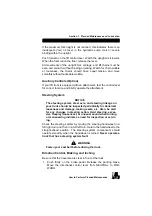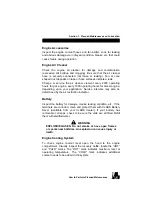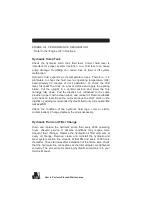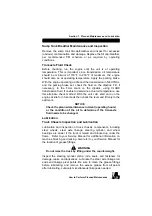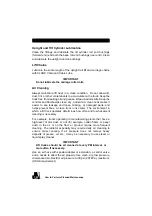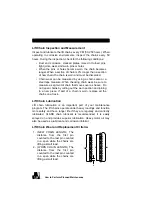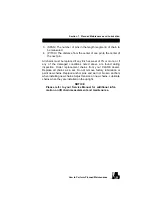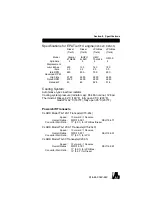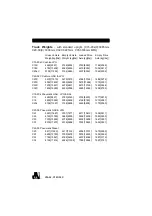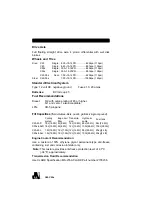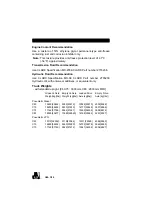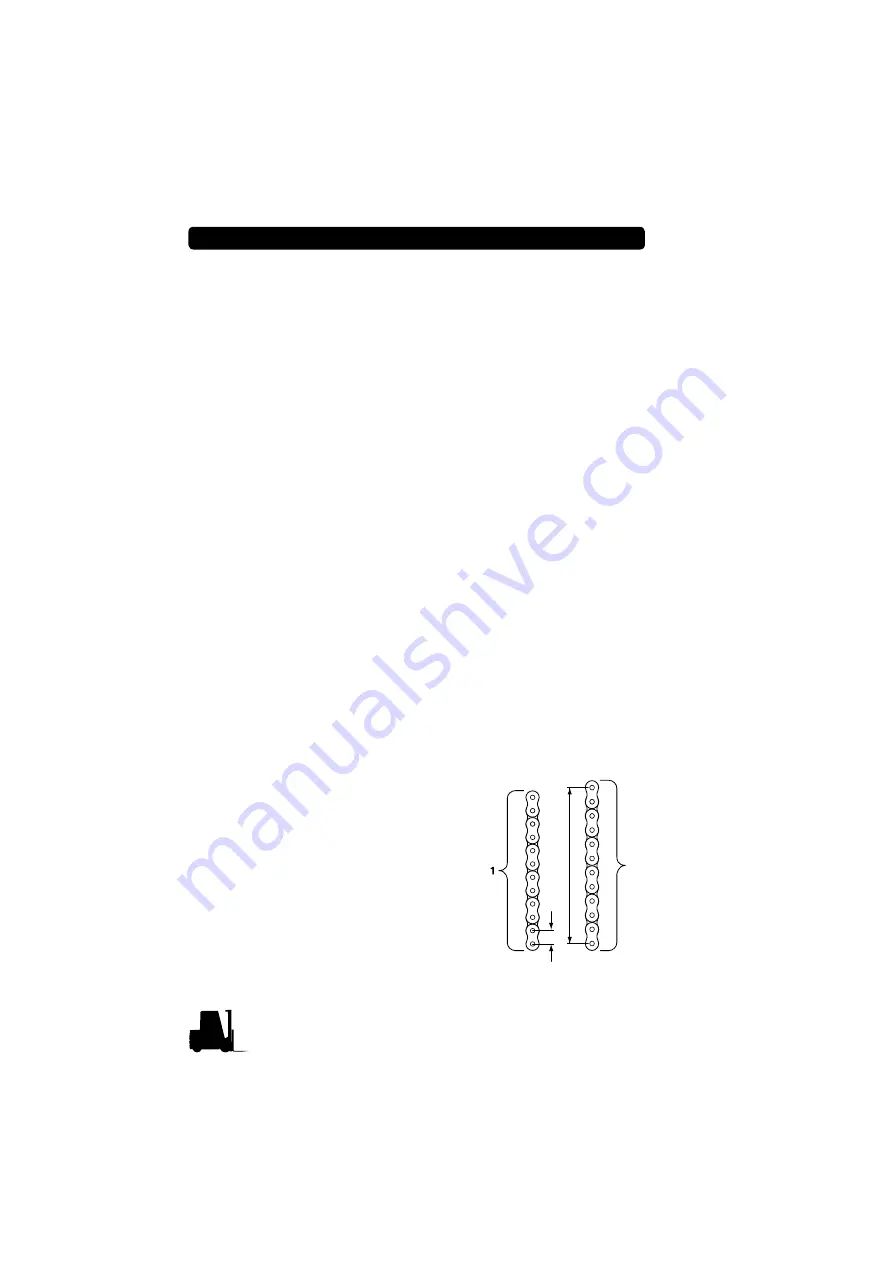
7-28
How to Perform Planned Maintenance
Lift Chain Inspection and Measurement
Inspect and lubricate the lift chains every PM (50-250 hours). When
operating in corrosive environments, inspect the chains every 50
hours. During the inspection, check for the following conditions:
• Rust and corrosion, cracked plates, raised or turned pins,
tight joints, wear, and worn pins or holes.
• When the pins or holes become worn, the chain becomes
longer. When a section of chain is 3% longer than a section
of new chain, the chain is worn and must be discarded.
• Chain wear can be measured by using a chain scale or a
steel tape measure. When checking chain wear, be sure to
measure a segment of chain that moves over a sheave. Do
not repair chains by cutting out the worn section and joining
in a new piece. If part of a chain is worn, replace all the
chains on a truck.
Lift Chain Lubrication
Lift chain lubrication is an important part of your maintenance
program. The lift chains operate under heavy loadings and function
more safely and have longer life if they are regularly and correctly
lubricated. CLARK chain lubricant is recommended; it is easily
sprayed on and provides superior lubrication. Heavy motor oil may
also be used as a lubricant and corrosion inhibitor.
Lift Chain Wear and Replacement Criteria:
1. (NEW CHAIN LENGTH) The
distance from the first pin
counted to the last pin counted
in a span while the chains are
lifting a small load.
2. (WORN CHAIN LENGTH) The
distance from the first pin
counted to the last pin counted
in a span while the chains are
lifting a small load.
3
2
4
1
Summary of Contents for C15 D
Page 2: ......
Page 6: ...iv...
Page 16: ...1 4 Seat Belts Seat Belts ALWAYS BUCKLE UP Seat belts can reduce injuries...
Page 30: ......
Page 88: ...5 8...
Page 107: ...PM Report Form 7 13 Section 7 Planned Maintenance and Lubrication...
Page 124: ...7 30...
Page 142: ......
Page 143: ......






